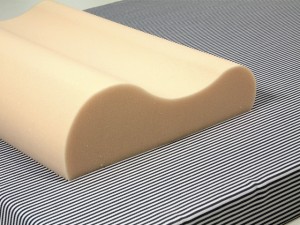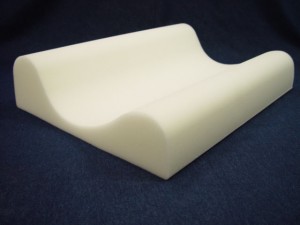
Practically everyone has had nights when no matter how tired they were or how badly they wanted to, they could not fall asleep. Other times, we get to sleep just fine but wake up stiff and uncomfortable. Given the importance of restful sleep, both of these situations directly detract from our ability to lead enjoyable, successful lives. As we try to pinpoint the reasons we can’t sleep or wake up achey, we go through hundreds of possibilities. One potential source for these problems is right under your nose. Or, more specifically, right under your head.
Pillows play a huge role in sleep but are often overlooked in favor of more expensive or involved changes in bedding and lifestyle. They are where we get support for our head, neck and shoulders however, and that can affect every other part of our body. This is why understanding your sleep style and matching it to an appropriate pillow can have such a physiological impact that leads to better sleep. And with decades of experience in the bedding and comfort industry, Foam Factory, Inc. has a wide range of pillows to meet any need, preference, or desire.
Generally speaking there are three primary sleeping positions: side, back, and stomach. A preferred sleeping position is not typically something that can be actively selected, as your body dictates what it does and doesn’t like without deference to what your mind may suggest. In each position, the body is aligned and supported differently, which requires different levels of comfort and support in a pillow. Whether it’s a foam pillow, a latex pillow, or a body wedge, what works best in one position isn’t always the best support cushion for another.
Side-sleeping is considered to be the most common sleeping position. Because the shoulders raise the sleeper higher than they would be on their back, bed pillows for this style need to have adequate loft to cradle the head in line with the spine, without letting it sag or roll. Foam Factory offers multiple head and neck support pillows that are designed with the side sleeper in mind, made in both conventional and memory foam to combine structural function with personalized comfort. For people who primarily sleep on their sides but may occasionally roll to their back, a contour pillow is offered that rises along the shoulders to support the neck and falls to cradle the head. This pillow is offered in both 3LB and 5LB memory foam, as well as conventional poly foam, and is excellent for maintaining cervical and back support for most people.
Foam Factory also offers a one-of-a-kind, in-house designed ear pillow for side sleepers who are particularly sensitive to pressure. Offered in 5LB memory foam and poly foam, this pillow has the same neck-supporting contour at its base with an additional scoop contour to relieve pressure on the ear while resting. While not used for the head, many side-sleepers benefit from a knee pillow or body pillow under the legs to help support the lower spine, legs and pelvis.

Back sleeping is also quite common and creates a much different situation than individuals who sleep on their sides. Because the body is flat, the mattress supports much more, requiring less “third-party help” in the form of loftier head pillows. The sleeping profile is lower on your back, so a pillow used to support the head and neck on your side can force your head forward and your chin down, throwing off your alignment and giving you a splendidly stiff neck in the morning. Softer, fluffier pillows are often suggested for back sleepers. Foam Factory has smooth 3LB and 5LB memory foam pillows for back sleeping. For taller or larger-framed individuals, the contour pillows may be excellent neck pain pillows too, provided the head isn’t forced up at an angle. Shredded foam pillows in memory foam and conventional foam are another choice, providing low-profiles that are more compressive under the head’s weight, preventing an unnatural posture. They also make excellent travel pillows because of their compressibility. An additional boost in support for back-sleepers can be gained by placing a foam bolster or pad under the knees to relieve the lower back.
Lastly, there are the stomach-sleepers. This is the position least likely to be used, and many sleep experts recommend one of the other two sleeping positions for better body support, but for people who sleep this way restfully and comfortably, there is no harm done. What can be an issue however, is using a pillow with too much loft. Sleeping on your stomach puts your spine above your head, meaning a lofty pillow will push your head and neck upward and out of alignment. The suggested solution for stomach-sleepers is a very soft or compressible pillow and in some cases, no pillow at all works surprisingly well. If not using a pillow feels unnatural or uncomfortable, soft and fluffy shredded foam pillows are an excellent option, as they provide cushion without torqueing the head upward. Additionally, a pillow placed under the waist has helped many people combat lower back pain, and a shredded foam or fiberfill pillow can help without forcing the body upward, throwing it out of alignment in the opposite direction.
The next time you’re having sleep issues, consider the way you fall asleep and evaluate whether or not the pillows you use are conducive to your sleep style. Your body knows what it wants, and stiffness and poor sleep may be its way of telling you it needs a little more help to get you the rest it needs.

